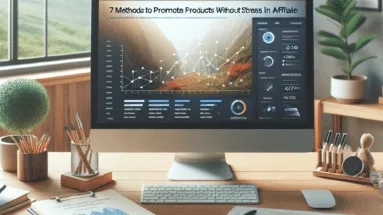
The Comprehensive Dos and Don’ts for Affiliate Marketing
Do Choose the Right Niche Focus on Your Interests Choosing the right niche is like picking the right outfit - it’s gotta fit! Personally, I find that when I work in a

Do Choose the Right Niche Focus on Your Interests Choosing the right niche is like picking the right outfit - it’s gotta fit! Personally, I find that when I work in a

1. Leverage Social Media Platforms Understanding Your Audience When I first started in affiliate marketing, I quickly realized that understanding my audience was crucial.

Neglecting Quality Content The Importance of High-Quality Content When I first dove into affiliate marketing, I learned the hard way that slapping together a few words just doesn't cut it. High-quality content

Choosing the Right Niche Understanding Your Interests When I first dipped my toes into affiliate marketing, I had no clue how vital it was to focus on a niche that resonates with

Leverage Automation Tools Understanding the Basics of Automation In my early days as an affiliate marketer, I spent countless hours doing repetitive tasks. That's when I stumbled across automation tools, and let

The Importance of Choosing the Right Niche Understanding Your Passion When I first dipped my toes into affiliate marketing, I underestimated how crucial it was to choose a niche that genuinely excited

Organize Your Tools Effectively Choose Your Essential Tools When I first started in affiliate marketing, I was overwhelmed by the sheer number of tools available. I spent hours trying to figure out

Pitfall 1: Choosing the Wrong Affiliate Programs Understanding Your Audience When I first dipped my toes into affiliate marketing, I jumped on the bandwagon

Focus on Your Niche Understanding Your Audience When diving into affiliate marketing, the first thing I learned was the importance of knowing my audience. Not everyone will resonate with the products I

Affiliate Marketing is Still Profitable Today Understanding the Demand Let’s start with the basics. When I talk to folks in my network, a common theme emerges: people are still buying stuff online.

Understanding the Affiliate Marketing Landscape

Hey there! If you’re looking to start your journey in affiliate marketing, you’ve landed at the right spot. I’m here to share my personal experience and guide you through the

Choosing the Right Niche Understanding Your Interests When I first dove into affiliate marketing, I quickly realized that picking a niche I was genuinely

What is Affiliate Marketing, and How Does It Work? Understanding the Basics Alright, so let’s kick things off by defining what affiliate marketing really

Choose Your Niche Wisely Find What You're Passionate About Choosing the right niche is incredibly important. I remember when I first started, I just jumped into whatever seemed trendy, not really caring

Understanding Your Audience Getting to Know Who They Are One of the biggest mistakes I made when I started affiliate

Flexibility and Freedom Your Schedule, Your Rules One of the biggest perks I found when I dove into affiliate marketing was the freedom it

Understanding the Myth of Passive Income Defining

Understanding Your Niche Choosing the Right Niche When I first dipped my toes into affiliate marketing, I spent a ton of time figuring out what niche I wanted to focus on. It’s

Step 1: Choose the Right Niche Finding Your Passion Getting started with affiliate marketing is all about choosing the right niche that aligns with